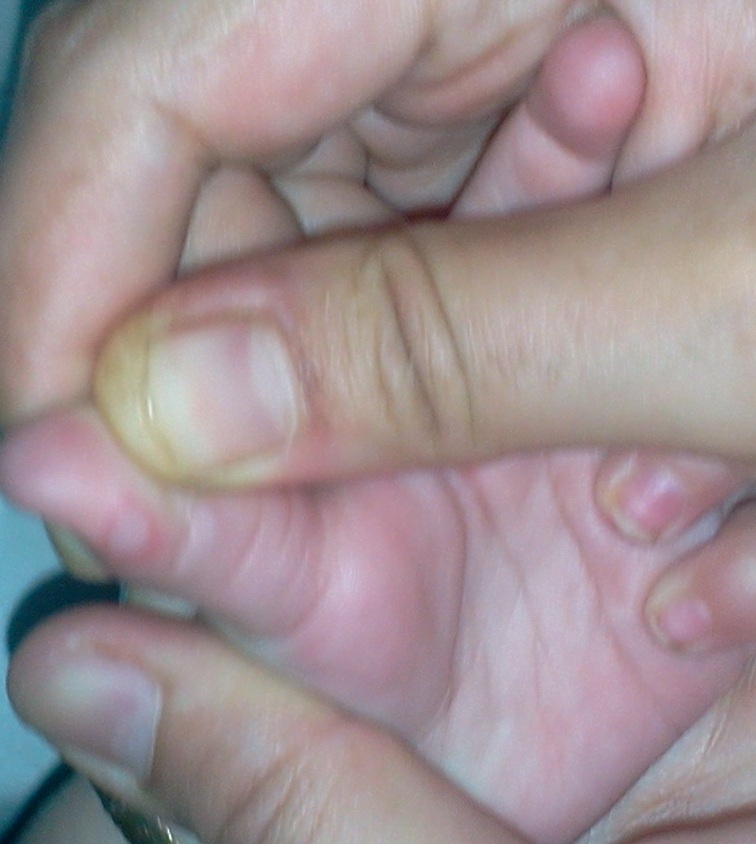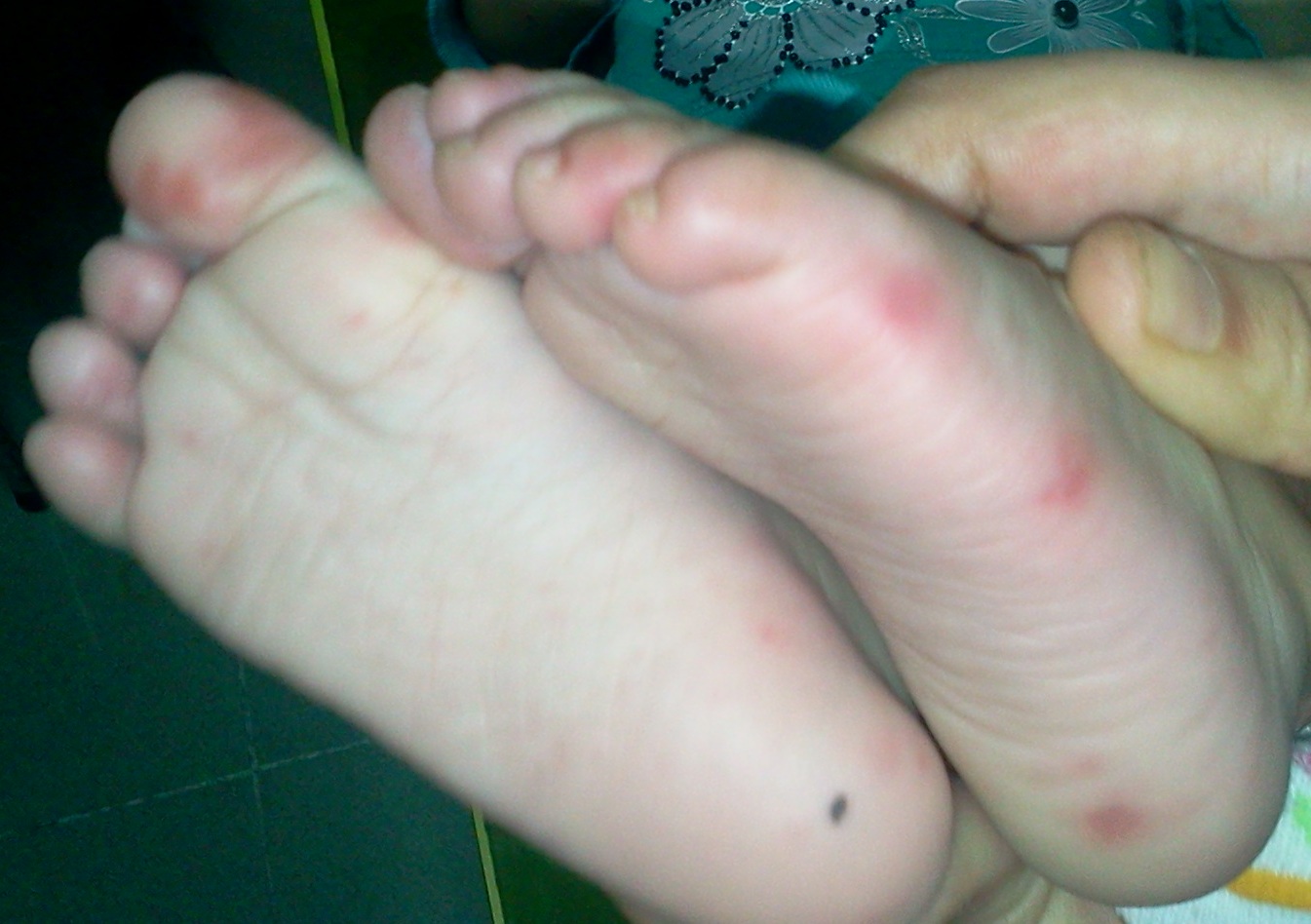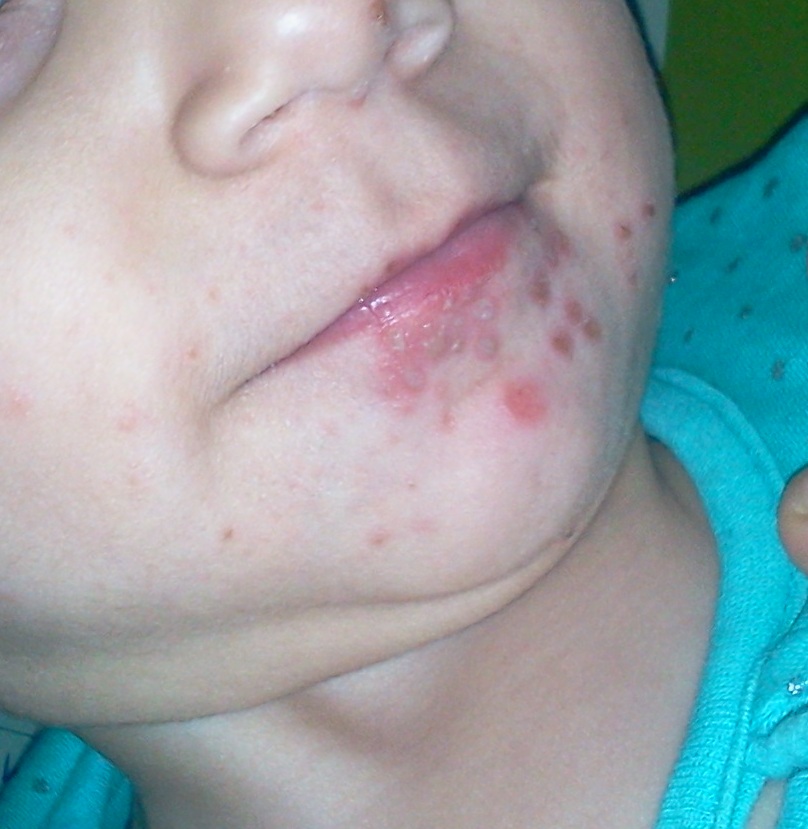
طبیب کودکان
مطالب اموزشی در طب کودکان و ارتباط با همکاران
طبیب کودکان
مطالب اموزشی در طب کودکان و ارتباط با همکارانشیوع بیماری hand foot &mouth disease


این بیماری از بیماریهای بثوری با منشا ویروسی است که در پاییز امسال موارد متعددی از ان به کلینیک های اطفال مراجعه نموده اند این بیماری دست ها پا ها و دهان و نواحی اطراف مقعد را در گیر می کند و در نوعی که در حال حاضر شیوع دارد تا کنون عارضه ای مشاهده نکرده ایم

Hand-Foot-and-Mouth Disease.
Hand-foot-and-mouth disease, 1 of the more distinctive rash syndromes, is most frequently caused by coxsackievirus A16 and can also be caused by enterovirus 71; coxsackie A viruses 5, 7, 9, and 10; and coxsackie B viruses 2 and 5. It is usually a mild illness, with or without low-grade fever. The oropharynx is inflamed and contains scattered vesicles on the tongue, buccal mucosa, posterior pharynx, palate, gingiva, and/or lips ( Fig. 247-1 ). These may ulcerate, leaving 4–8 mm shallow lesions with surrounding erythema. Maculopapular, vesicular, and/or pustular lesions may also occur on the hands and fingers, feet, and buttocks and groin; hands are more commonly involved than the feet (see Fig. 247-1 ). Lesions on the hands and feet are usually tender vesicles varying in size from 3 to 7 mm and are more common on dorsal surfaces but frequently also occur on palms and soles. Vesicles resolve in about 1 wk. Buttock lesions do not usually progress to vesiculation. Disseminated vesicular rashes may complicate pre-existing eczema. Hand-foot-and-mouth disease caused by enterovirus 71 is frequently more severe than that due to coxsackievirus A16, with high rates of neurologic disease, including, in outbreaks, brainstem encephalomyelitis, neurogenic pulmonary edema, pulmonary hemorrhage, shock, and rapid death, especially in young children.
Hand-Foot-Mouth Disease · Illustrations · Hand, Foot, and Mouth Disease on the Soles · · Hand, Foot, and Mouth Disease on the Hand · Hand, Foot, and Mouth Disease on the Foot · · Hand, Foot, and Mouth Disease - Mouth · Hand, Foot, and Mouth Disease on the Foot · Hand-foot-mouth disease is a relatively common infection viral infection that usually begins in the throat. A similar infection is herpangina. News & Features · WORLD BUSINESS BRIEFING | ASIA; China: Rushing To Track Children's Disease · Virus Kills 22 Children in Eastern China · TRAVEL ADVISORY; C.D.C. Issues Warning On Virus in Taiwan Reference from A.D.A.M. Alternative Names Coxsackievirus infection Causes Hand-foot-and-mouth disease (HFMD) is most commonly caused by coxsackievirus A16, a member of the enterovirus family. The disease is not spread from pets, but it can be spread by person to person. You may catch it if you come into direct contact with nose and throat discharges, saliva, fluid from blisters, or the stools of an infected person. You are most contagious the first week you have the disease. The time between infection and the development of symptoms is about 3 - 7 days. The most important risk factor is age. The infection occurs most often in children under age 10, but can be seen in adolescents and occasionally adults. The outbreaks occur most often in the summer and early fall. Symptoms · Fever · Headache · Rash with very small blisters on hands, feet, and diaper area; may be tender or painful if pressed · Sore throat · Ulcers in the throat (including tonsils), mouth, and tongue Exams and Tests A history of recent illness and a physical examination, demonstrating the characteristic vesicles on the hands and feet, are usually sufficient to diagnose the disease. Treatment There is no specific treatment for the infection other than relief of symptoms. Treatment with antibiotics does not work and is not recommended. Over-the-counter medicines, such as acetaminophen (Tylenol) or ibuprofen can be used to treat fever. Aspirin should not be used in viral illnesses in children under age 12 years. Salt water mouth rinses (1/2 teaspoon of salt to 1 glass of warm water) may be soothing if the child is able to rinse without swallowing. Make sure your child gets plenty of fluids. Extra fluid is needed when a fever is present. The best fluids are cold milk products. Many children refuse juices and sodas because their acid content causes burning pain in the ulcers. Outlook (Prognosis) Generally, complete recovery occurs in 5 to 7 days. Possible Complications · Dehydration When to Contact a Medical Professional Call your health care provider if there are signs of complications, such as pain in neck or arms and legs. Emergency symptoms include convulsions. You should also call if: · Medicine does not lower a high fever · Signs of dehydration occur: o Dry skin and mucus membranes o Weight loss o Irritability o Lethargy o Decreased or dark urine Prevention Avoid contact with people with known illness. Practice strict hand washing if in contact with infected children. Back to TopReferences Abzug MJ. Nonpolio enteroviruses. In: Kliegman RM, Behrman RE, Jenson HB, Stanton BF, eds. Nelson Textbook of Pediatrics. 19th ed. Philadelphia, Pa: Saunders Elsevier; 2011:chap 242. Habif TP. Exanthems and drug eruptions. In: Habif TP, ed. Clinical Dermatology . 5th ed. St. Louis, Mo: Mosby Elsevier; 2009:chap 14. |


























